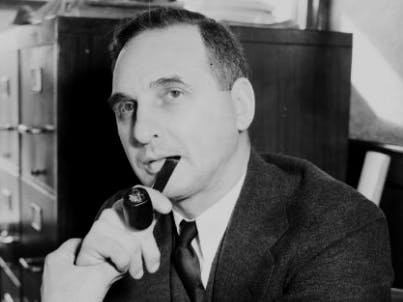“Sit Down,” Maurice Sugar, 1936–1937
Use this primary source text to explore key historical events.
Suggested Sequencing
- Use this primary source as a supplement to the Labor Upheaval, Industrial Organization, and the Rise of the CIO Narrative.
Introduction
In the 1920s, the flourishing automobile industry brought prosperity to Detroit, Michigan. With the 1929 stock market crash and the onset of the Great Depression, car sales collapsed, and production plummeted. The depression forced General Motors and other car companies to lay off many of their workers in Detroit.
On March 7, 1932, a march of unemployed autoworkers was met with violence when four workers were shot to death by the local police and security guards employed by the Ford Motor Company. The Ford Hunger March, as the demonstration became known, contributed to the creation of the United Automobile Workers (UAW) labor union. Four years later, the UAW staged a strike that began in December 1936. Some 100,000 autoworkers simply sat down on the job and occupied 17 General Motors plants. “Sit Down,” written by attorney Maurice Sugar, became an anthem of the strikers. After f44 days, the strike ended in a victory for UAW, thanks in part to a labor-friendly governor, Frank Murphy, who used the National Guard as a peacekeeping force that assisted negotiations. The UAW gained union recognition from General Motors and a promise the company would not fire or otherwise punish the strikers. Workers also received a wage increase of five cents an hour. Maurice Sugar went on to serve as general counsel of the UAW from 1937 to 1946.
Sourcing Questions
- Who wrote “Sit Down”?
- Briefly describe the context for the creation of this song.
| Vocabulary | Text |
|---|---|
| Chorus: Sit down, just keep your seat Sit down and rest your feet Sit down, you got ’em beat Sit down, sit down! |
|
| When they tie the hands of the union man—sit down, sit down When they give ’em a pact they’ll take them back—sit down, sit down |
|
| pact(n): an agreement or deal | When they tie a can to the union man—sit down, sit down When they give them the pact that will take them back—sit down, sit down |
| When they smile and say, “No raise in pay!”—sit down, sit down When you want the boss to come across—sit down, sit down |
|
| When your feet are numb just twiddle your thumb—sit down, sit down When you want ’em to know they’d better go slow—sit down, sit down |
|
| When the boss won’t talk go and take a walk—sit down, sit down When the boss see that he’ll want a little chat—sit down, sit down |
Comprehension Questions
- What purpose does the repetition of “sit down” serve?
- What will convince the boss to negotiate, according to this stanza?
Historical Reasoning Question
- Compare the techniques and circumstances of the 1936–1937 UAW strike with the 1892 Homestead Strike (see The Homestead Strike Narrative).
“Sit Down” (lyrics) http://www.laborarts.org/exhibits/laborsings/song.cfm?id=5
